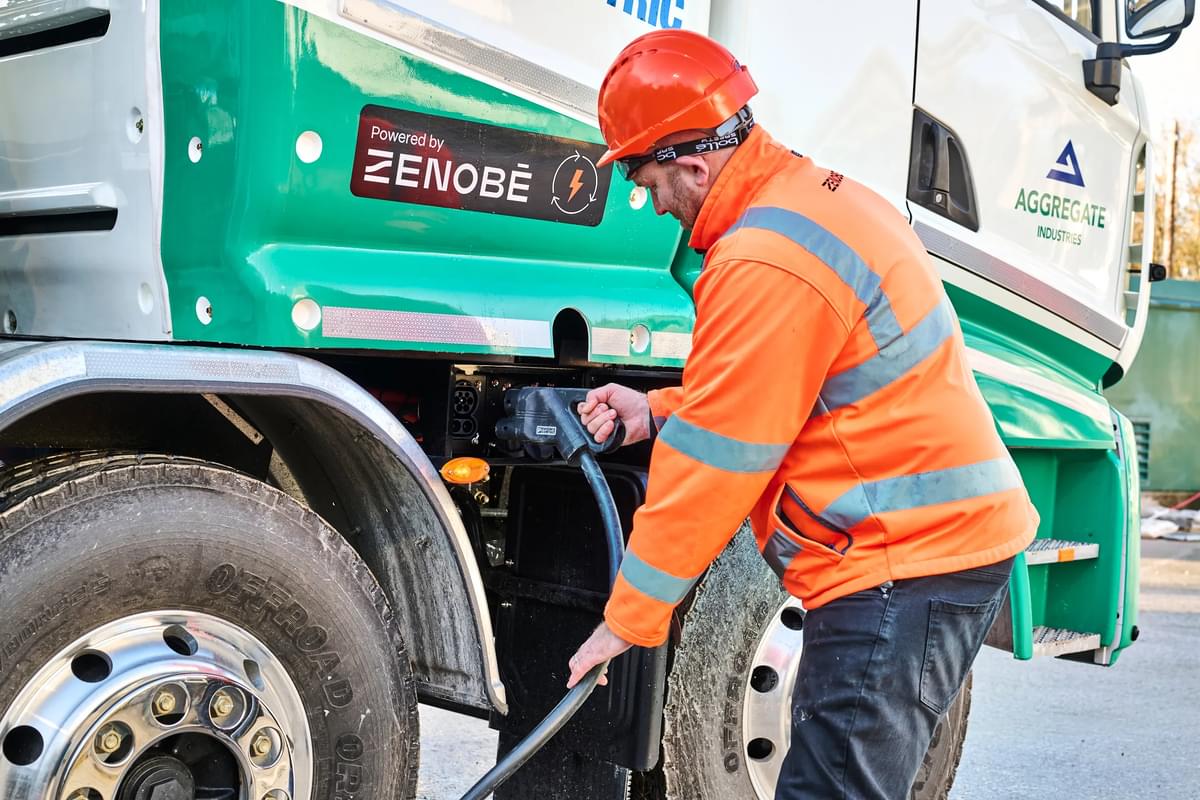Is It Time to See Electric Trucks as Long-Term Fleet Assets?

6 November 2024
As the shift towards net zero gathers pace, Head of Fleet Ian Dennis considers whether it’s time to think of electric trucks as long-term assets with an operational fleet.
With electric HGV’s being a viable option for short and medium duty cycles, do we need to reconsider the truck funding model and challenge our perception of trucks and their life span? Truck leasing and contract hire has always considered the truck as a single entity. However, electric trucks are made up of two very distinct components – the chassis and the battery. By viewing them under this lens of being two separate entities we quickly start to see the evidence for reassessing the asset lifespan.
Learning from the electric bus sector
OEM chassis today are extremely well built. We have seen this in the electric bus market, where they’re now capable of operating for longer. In the electric bus sector large reductions in maintenance costs are being achieved due to less vibration and fewer moving parts – similar cost reductions should also be expected with electric HGV’s. Additionally, an ICE truck’s lifetime to date has been determined by changes in policy requiring vehicles to adhere to environmental standards and emissions controls – like London’s ULEZ, for example. Moving to a zero-emission truck solution enables full and instant compliance with current regulations.
Typically, operating models for the funding of ICE trucks have been based on 3, 5 or potentially 7-year funding periods, usually determined by access to funding or the end customer’s contract term. However, in the electric bus world, it is not unusual for a chassis to be operating far longer. Routes are normally awarded in 7-year cycles and an electric bus should be capable of operating for at least two such cycles.
Separating the chassis from the battery to extend the vehicle’s revenue earning potential
If the chassis could last longer, then what about the most expensive component on an eHGV – the battery? Manufacturer warranties are extending, but the likelihood is at some point during its lifecycle, the truck will need a battery replacement. Such a replacement could take advantage of changes in battery technology, provided it matches the specifications and battery management software of the original unit. As this technology matures there will be opportunities to swap out older batteries and replace with new, more efficient ones. The original batteries can be repurposed in second life applications, to be used in other sectors or to support charging infrastructure.
Replacing the battery on a truck extends its life and its revenue-earning potential for its operator. Providing a lease to cover both the chassis and the battery gives the lessor its security, but the funding models will need to adapt and change to cover battery replacement. Operators will benefit by keeping trucks operational for longer, potentially without the need for increased maintenance costs. Another benefit of a longer life span is the lengthening of the depreciation cycle, enabling operators to preserve profit at a time when margins are under pressure.
Early adopters in the shipping industry are already looking at extended contract terms to enable longer funding periods. Although there is still a cost differential between ICE and EV, it’s apparent that longer funding periods can reduce cashflow pressure. Do we need to look at trucks in a new way? Electric truck solutions are now a proof-of-concept for applications such as back-to-base and urban operations, and a new perspective on the asset itself may enable operators to unlock their route to decarbonisation.
Spotlight: Delivering financing and charging infrastructure for the truck sector
In fact at Zenobē, we’re pleased to already be working closely with operators to make this shift happen. We are making inroads in delivering truck fleet electrification trials and projects for heavy fleet operators around the world. In Australia, we are partnering with Woolworths, Australia’s largest supermarket chain, to establish the nation’s first offsite truck charging hub. The project includes the first electric vehicle as a service (EVaaS) model executed in Australia. The EVaaS model means we can use our electrification expertise to manage fleet electrification risks including battery replacement cycles. The EVaaS model also includes the funding of 60 trucks that are owned by Zenobē and leased back to the supermarket chain. The site will also have the capacity to accommodate third party BEV trucks to create a multi-user facility, with additional revenue generated via utilisation agreements to access the charging infrastructure.
In Scotland, we are partnering with a consortium of eight electric bus and coach operators to provide financing and delivery of charging infrastructure to support 250 electric buses and coaches. The interesting aspect about this project for truck operators is the commitment by each consortium member to open up their new charging infrastructure to third party fleet operators to create a Scotland-wide rapid charging network for use by bus, coach and heavy goods vehicles. This approach will significantly boost the connectivity and access to charging infrastructure for heavy fleets across Scotland.
We’re also seeing great strides being made in the construction sectors by innovative, first mover construction companies and OEMs. We’ve been pleased to support construction materials providers Aggregate Industries and Breedon Group with trialling fully electric mixer trucks. Following a successful trial period in 2023, Aggregate Industries has integrated a Sany Putzmeister iONTRON electric mixer truck into its fleet, using data from our charger and smart charging software to inform it electrification strategy. A similar trial with Breedon Group is also progressing well with insights from the project shared by Ian Dennis, Head of Fleet at Zenobē, Tony Power, Procurement – Head Of Category at Breedon and Tobias Plotzitzka, Operations Director, Putzmeister at the Motor Transport Decarbonisation Summit.
Ian Dennis, Head of Fleet
Discover more about electric trucks at https://www.zenobe.com/trucks-commercial-vehicles/
